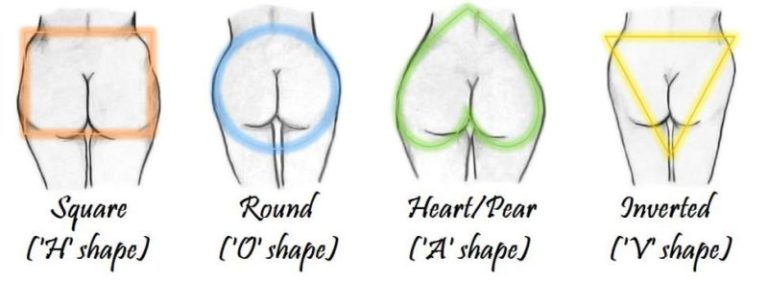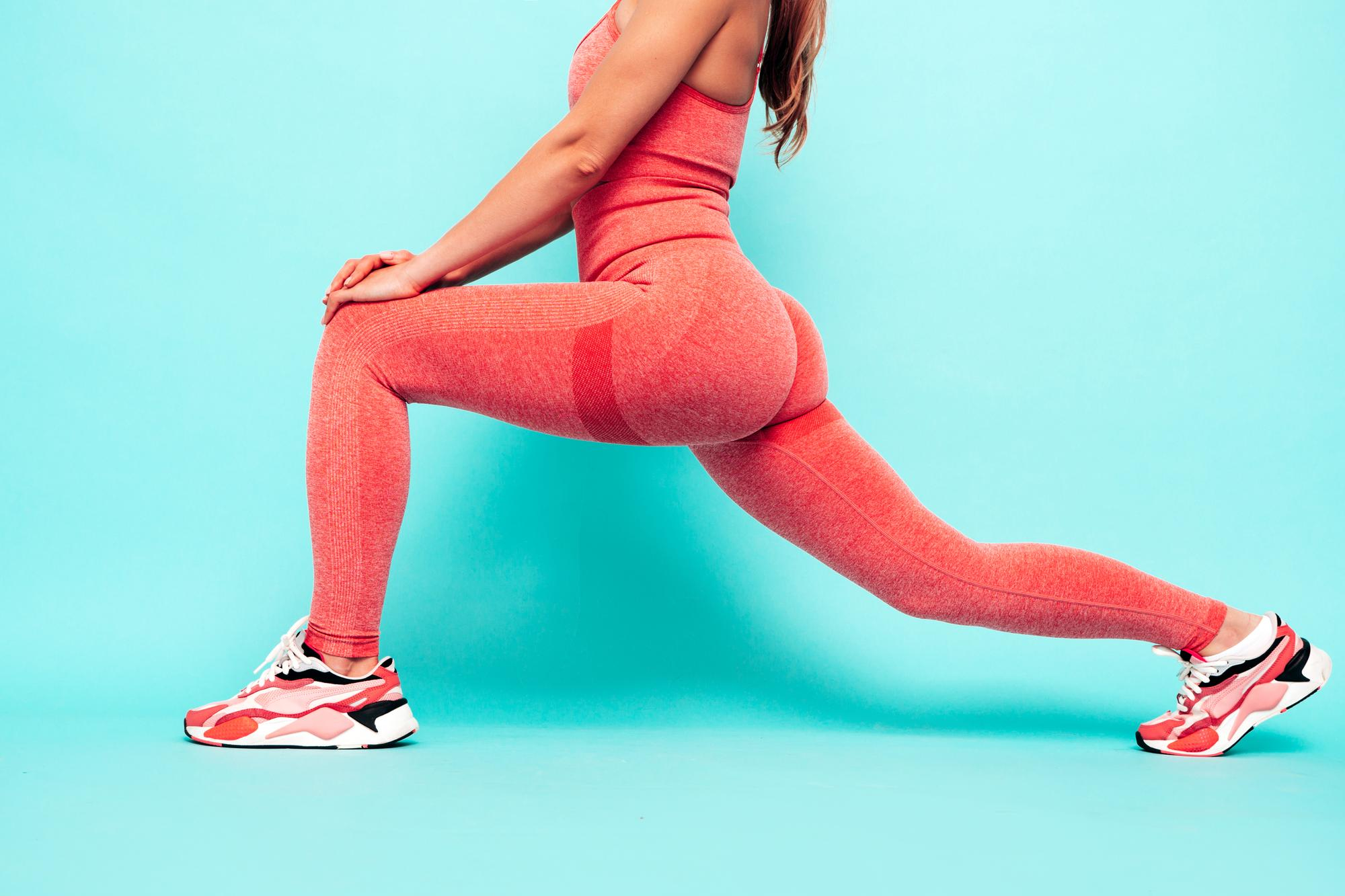Ever wonder why your glutes don’t look like hers—even when you’re showing up, lifting heavy, and eating clean? The truth is, your glute shape is shaped by more than your workouts. Your bone structure, muscle insertions, and fat distribution all play a role.
But here’s the good news: you can absolutely build your dream glutes—strong, round, and lifted—no matter your starting point. With smart training and consistent nutrition, every woman can sculpt glutes that feel just as powerful as they look.
In this guide, you’ll learn:
-
The 4 most common glute shapes (and how to identify yours)
-
Targeted training tips to enhance your natural shape
-
The best exercises to sculpt your backside
-
Science-backed nutrition and recovery strategies for lasting results
What’s Your Glute Shape? (And Why It Matters)

Knowing your glute shape can help you train smarter—not harder. According to glute specialists and aesthetic experts, there are four main shapes:
🔲 Square Glutes (H shape)
Look: Straight from the waist down, with minimal curve on the outer hip. Often features hip dips or “love handles.”
Why it happens:
-
Higher hip bones
-
Longer femur heads
-
Fat distributed above the pelvis
-
Underdeveloped glute medius
Goal: Add upper-glute fullness and outer curve
Top Exercises:
-
Banded clamshells
-
Cable abductions
-
Glute bridges with frog feet
-
Step-ups
💗 Heart-Shaped Glutes (aka Pear Shape/ A shape)
Look: Full at the bottom, narrower at the top. Feminine and curvy, but may store more fat in the thighs and “saddlebags.”
Why it happens:
-
Wider pelvis
-
Estrogen-driven fat storage
-
Muscle volume lower on the glutes
Goal: Lift the base and balance the top
Top Exercises:
-
Hip thrusts
-
Sumo deadlifts
-
Kickbacks
-
Bulgarian split squats
🔻 V-Shaped Glutes
Look: Wider at the top, narrow at the base—often seen in women post-weight loss or with age-related changes.
Why it happens:
-
Low glute mass
-
Loss of lower glute volume
-
Hormonal changes
Goal: Build lower-glute mass and roundness
Top Exercises:
-
Romanian deadlifts
-
Reverse lunges
-
Deep goblet squats
-
Banded bridges
🔵 Round Glutes (O shape)
Look: Balanced fullness all around. Think “bubble butt” with smooth, symmetrical curves.
Why it happens:
-
Moderate pelvis width
-
Even fat/muscle distribution
-
Often genetic—but can absolutely be trained
Goal: Define and sculpt while maintaining roundness
Top Exercises:
-
Barbell hip thrusts
-
Walking lunges
-
Cable pull-throughs
-
Time-under-tension sets
How to Train for Your Ideal Shape
Whether you’re lifting at home or hitting the gym, these training principles will help you sculpt strong, functional glutes that match your natural shape.
✅ Train Glutes 3–4 Times a Week
Alternate between:
-
Activation days: Banded bridges, clamshells
-
Strength days: Hip thrusts, squats, RDLs
-
Volume days: Higher reps, circuits, bodyweight finishers
🚫 Soreness isn’t a sign of growth. Progress comes from consistency, progressive overload, and recovery.
Focus on Form and Mind-Muscle Connection
Slowing down your reps and feeling the contraction—especially during the lowering phase—boosts muscle recruitment and results.
Use Progressive Overload
To grow glutes, you need to gradually increase:
-
Resistance (heavier dumbbells or bands)
-
Sets and reps
-
Tempo (pause reps, slow eccentrics)
-
Time under tension
Don’t Overtrain
Muscles grow during recovery—not during workouts. Prioritize sleep, mobility, hydration, and rest days (1–2 per week minimum).
Glute-Friendly Nutrition: What to Eat to Build Curves
Your training breaks down muscle. Your nutrition builds it back stronger.
🍽 Prioritize Protein
Aim for 1.6–2.2 g of protein per kg of body weight daily to support muscle repair and growth.
Clean sources include:
-
Wild-caught salmon
-
Free-range eggs
-
Lentils and chickpeas
Embrace Smart Carbs
Your glutes love anti-inflammatory, whole-food carbohydrates like:
-
Sweet potatoes
-
Quinoa
-
Beets
-
Berries
Support Hormones with Healthy Fats
Glute growth thrives when your hormones are supported. Don’t fear fats—embrace them:
-
Avocados
-
Extra virgin olive oil
-
Flax, chia, walnuts
Quick FAQ: Glute Myths, Debunked
Are hip dips a flaw?
Not at all! Hip dips are mostly structural. But building your glute medius and minimus can create smoother curves.
Do I have to lift heavy to grow glutes?
You need resistance—but it doesn’t have to be heavy right away. Focus on progression and form. Bands, dumbbells, and even your own bodyweight can work—if used right.
Can I train glutes every day?
No. Three to four times per week is ideal. Your muscles need time to rebuild.
Will cardio shrink my glutes?
Excessive cardio can lead to muscle loss. Prioritize strength training + light cardio (like incline walking or cycling) for balanced results.
Final Thoughts
Your glute shape is your foundation—not your limitation. With the right approach, you can enhance what you have, build strength where it’s missing, and feel more confident in your body at every age.
Because this isn’t just about appearance—it’s about feeling grounded, powerful, and supported from the inside out.
So start where you are, train smart, nourish deeply, and let your glutes carry you with strength.
Learning about glute shape is one thing — building it is another. Discover 7 powerful strategies to actually sculpt and strengthen your glutes.
References:
- This guide is based on evidence-backed methods taught in the ISSA Glute Specialist Certification and Personal Trainer coursework, along with peer-reviewed research in strength and hypertrophy training.
**This article is for educational purposes only and is not intended as medical advice. Always consult a qualified healthcare provider before beginning any new exercise or nutrition program.
